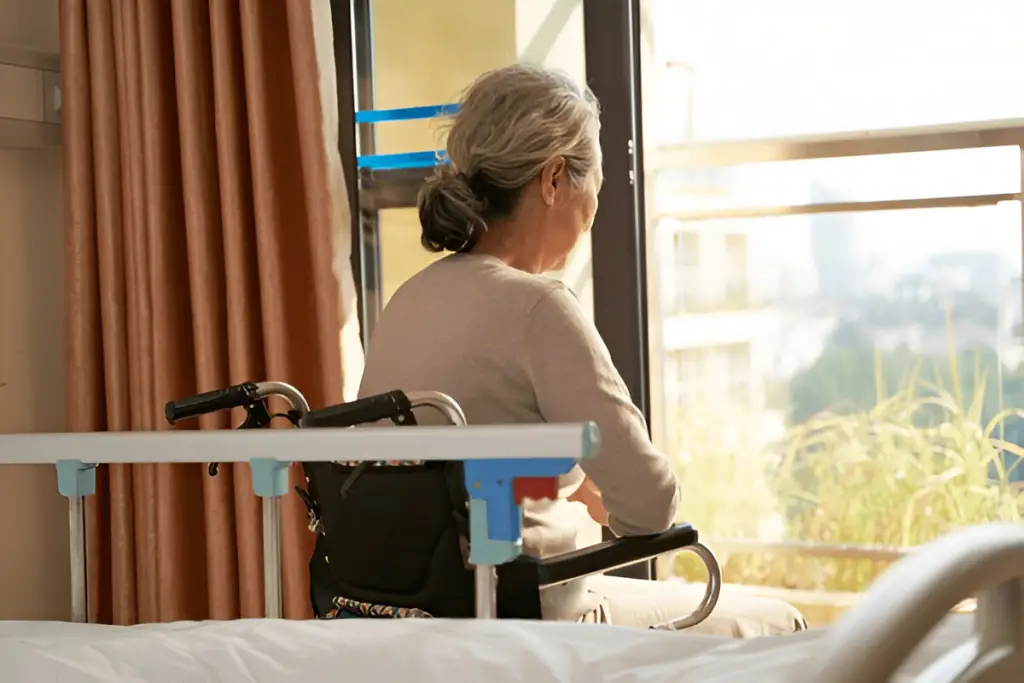For many seniors, figuring out Medicaid can feel overwhelming. Questions like ‘Do I qualify?’ or ‘What does it actually cover?’ often create confusion and stress. Understanding how Medicaid works for seniors is the first step toward accessing the care and support you need.
This guide makes understanding Medicaid simple and clear for everyone. We’ll explain who qualifies and what benefits you can expect. You’ll learn about Medicaid coverage for seniors in easy terms. We’ll cover the senior Medicaid eligibility requirements for 2025 and 2026 step by step. This post also explains Medicaid and senior long-term care options.
You’ll discover the difference between Medicare and Medicaid programs. We’ll show you how to apply and where to start. By the end, you’ll understand precisely how Medicaid can help you. Let’s make this journey together, one simple step at a time.
Table of Contents
What Is Medicaid for Seniors?

Medicaid is a government health insurance program for people with low income. It helps millions of Americans get the medical care they need. The program started in 1965 to help vulnerable populations access healthcare.
Key Takeaways
Understanding the basics of Medicaid helps you make more informed healthcare decisions. This program offers more benefits than many people realize. Here are the most essential points to remember:
- Medicaid covers medical care, prescription drugs, and long-term care services
- Both federal and state governments fund this vital program together
- Income and asset limits determine who can qualify for benefits
- You can have both Medicare and Medicaid at the same time
- Each state runs its own Medicaid program with different rules
What Does Medicaid Cover?
Medicaid provides comprehensive healthcare coverage for eligible seniors. The program covers both basic medical needs and specialized services. Coverage includes doctor visits, hospital stays, and prescription medications.
Essential Medical Services:
- Doctor appointments and specialist visits
- Hospital inpatient and outpatient care
- Emergency room visits and urgent care
- Laboratory tests and X-rays
- Prescription drugs and medical supplies
Long-Term Care Services:
- Nursing home care and skilled nursing facilities
- Home health aide services and personal care
- Adult day programs and respite care
- Medical equipment like wheelchairs and oxygen tanks
Who Is Eligible for Medicaid?
Senior Medicaid eligibility in 2025 and 2026 depends on income and asset limits. Each state sets its specific requirements within federal guidelines. Generally, you must be 65 or older with limited income.
Basic Eligibility Requirements:
- Age 65 or older, or have a qualifying disability
- U.S. citizenship or qualified immigrant status
- Meet income limits set by your state
- Have limited countable assets and resources
How Is Medicaid Funded?
Both federal and state governments share Medicaid costs. The federal government pays a percentage called the Federal Medical Assistance Percentage. States must contribute their matching funds to receive federal money.
Funding Structure:
- The federal government covers 50-83% of the costs per state
- States contribute the remaining percentage based on their income levels
- Wealthier states receive less federal matching funds than poorer states
- Total Medicaid spending exceeds $700 billion annually nationwide
State-Specific Income and Asset Limits for 2025 and 2026

Each state sets different income and asset limits for Medicaid. These limits change yearly based on federal poverty guidelines. Knowing your state’s limits helps determine your eligibility.
2025 and 2026 Dual Eligible Standards
The federal government sets minimum standards for dual-eligible programs. States can choose to be more generous than these limits. Here are the 2025 and 2026 federal poverty level percentages:
Qualified Medicare Beneficiary (QMB)
- Income Limit: 100% of Federal Poverty Level
- Individual: $1,325 monthly income limit
- Couple: $1,783 monthly income limit
- Asset Limit: $9,660 individual, $14,470 couple
Specified Low-Income Medicare Beneficiary (SLMB)
- Income Limit: 120% of Federal Poverty Level
- Individual: $1,585 monthly income limit
- Couple: $2,135 monthly income limit
- Asset Limit: $$9,660 individual, $$14,470 couple
Qualifying Individual (QI)
- Income Limit: 135% of Federal Poverty Level
- Individual: $1,781 monthly income limit
- Couple: $2,400 monthly income limit
- Asset Limit: $9,660 individual, $14,470 couple
State-Specific Income and Asset Limits for Seniors (2025 and 2026)

Understanding your state’s exact income and asset limits helps determine eligibility. Each state has different rules within federal guidelines. Most states allow up to $2,901 in monthly income for nursing home care, but community-based program limits range from $967 to $1,795 per month, depending on the state’s specific regulations.
| State | Website/Portal | Income Limit (2025 & 2026) | Asset Limit |
|---|---|---|---|
| Alabama | https://medicaid.alabama.gov/ | $2,901 individual, $5,802 couple | $2,000 individual, $3,000 couple |
| Alaska | https://www.medicaidalaska.com/ | $2,901 individual, $5,802 couple | $2,000 individual, $3,000 couple |
| Arizona | https://www.azahcccs.gov/AHCCCS/Initiatives/Telehealth/ | $2,901 individual, $5,802 couple | $2,000 individual, $3,000 couple |
| Arkansas | https://humanservices.arkansas.gov/find-service-providers/ | $2,901 individual, $5,802 couple | $2,000 individual, $3,000 couple |
| California | https://www.dhcs.ca.gov/provgovpart/Pages/Telehealth.aspx | $1,801 individual, $2,433 couple | $2,000 individual, $3,000 couple |
| Colorado | https://www.healthfirstcolorado.com/find-doctors/ | $1,459 individual, $5,802 couple | $2,000 individual, $3,000 couple |
| Connecticut | https://portal.ct.gov/husky | $2,901 individual, $5,802 couple | $1,600 individual, $2,400 couple |
| Delaware | https://dhss.delaware.gov/dmma/ | $2,417 individual, $5,802 couple | $4,000 individual, $6,000 couple |
| Florida | https://ahca.myflorida.com/medicaid | $2,901 individual, $5,802 couple | $2,000 individual, $3,000 couple |
| Georgia | https://www.mmis.georgia.gov/… | $2,901 individual, $5,802 couple | $2,000 individual, $3,000 couple |
| Hawaii | https://medquest.hawaii.gov/ | $1,819 individual, $2,452 couple | $2,000 individual, $3,000 couple |
| Idaho | https://healthandwelfare.idaho.gov/… | $1,470 individual, $2,433 couple | $2,000 individual, $3,000 couple |
| Illinois | https://www.cchpca.org/illinois/ | $1,3041 individual, $1,762 couple | $2,000 individual, $3,000 couple |
| Indiana | https://www.mhsindiana.com/members/… | $1,763 individual, $5,802 couple | $1,500 individual, $2,250 couple |
| Iowa | https://hhs.iowa.gov/medicaid/plans-programs/… | $1,450 individual, $5,802 couple | $2,000 individual, $3,000 couple |
| Kansas | https://www.kancare.ks.gov/ | $2,901 individual, $5,802 couple | $2,000 individual, $3,000 couple |
| Kentucky | https://kynect.ky.gov/benefits/s/… | $1,304 individual, $5,802 couple | $2,000 individual, $3,000 couple |
| Louisiana | https://www.louisianahealthconnect.com/… | $2,901 individual, $5,802 couple | $2,000 individual, $4,000 couple |
| Maine | https://www.maine.gov/dhhs/oms/member-resources/telehealth | $2,901 individual, $5,802 couple | $2,000 individual, $3,000 couple |
| Maryland | https://health.maryland.gov/mmcp/provider/… | $2,901 individual, $5,802 couple | $2,500 individual, $4,000 couple |
| Massachusetts | https://www.mass.gov/doc/all-provider-bulletin-374… | $2,901 individual, $5,802 couple | $2,000 individual, $3,000 couple |
| Michigan | https://www.caresource.com/mi/members/… | $2,901 individual, $5,802 couple | $2,000 individual, $3,000 couple |
| Minnesota | https://mn.gov/dhs/people-we-serve/seniors/… | $2,344 individual, $5,802 couple | $3,000 individual, $6,000 couple |
| Mississippi | https://medicaid.ms.gov/providers/ | $2,901 individual, $5,802 couple | $4,000 individual, $6,000 couple |
| Missouri | https://mydss.mo.gov/mhd/bulletin-hot-tip/telemedicine | $1,499 for both | $1,000 individual, $2,000 couple |
| Montana | https://medicaidprovider.mt.gov/manuals/… | $967 individual, $1,450 couple | $2,000 individual, $3,000 couple |
| Nebraska | https://www.uhcprovider.com/en/resource-library/news/2024/… | $1,305 individual, $1,762 couple | $4,000 individual, $6,000 couple |
| Nevada | https://dhcfp.nv.gov/Resources/NevadaMedicaidUpdate/Telehealth/ | $1,304 individual, $2,220 couple | $2,000 individual, $3,000 couple |
| New Hampshire | https://www.nhhealthyfamilies.com/members/… | $1,304 individual, $2,220 couple | $2,500 individual, $4,000 couple |
| New Jersey | https://njfamilycare.dhs.state.nj.us/ | $2,901 individual, $5,802 couple | $2,000 individual, $4,000 couple |
| New Mexico | https://www.hca.nm.gov/turquoise-care/ | $2,901 individual, $5,802 couple | $2,000 individual, $3,000 couple |
| New York | https://www.emedny.org/providermanuals/ | $2,901 individual, $5,802 couple | $32,396 individual, $48,594 couple |
| North Carolina | https://www.carolinacompletehealth.com/members/… | $1,763 individual, $2,752 couple | $2,000 individual, $3,000 couple |
| North Dakota | https://www.hhs.nd.gov/healthcare/medicaid/provider/… | $1,800 individual, $2,433 couple | $3,000 individual, $6,000 couple |
| Ohio | https://medicaid.ohio.gov/resources-for-providers/… | $2,901 individual, $5,802 couple | $1,500 individual, $2,250 couple |
| Oklahoma | https://oklahoma.gov/ohca/individuals/find-a-provider.html | $1,814 individual, $2,451 couple | $2,000 individual, $3,000 couple |
| Oregon | https://www.oregon.gov/oha/hsd/ohp/pages/telehealth.aspx | $2,901 individual, $5,802 couple | $2,000 individual, $3,000 couple |
| Pennsylvania | https://www.cchpca.org/pennsylvania/ | $1,762 individual, $2,901 couple | $2,400 individual, $4,800 couple |
| Rhode Island | https://www.cchpca.org/rhode-island/ | $2,901 individual, $5,802 couple | $4,000 individual, $6,000 couple |
| South Carolina | https://www.scdhhs.gov/communications/updates-telehealth… | $2,901 individual, $5,802 couple | $2,000 individual, $3,000 couple |
| South Dakota | https://dss.sd.gov/docs/medicaid/providers/billingmanuals/… | $2,901 individual, $5,802 couple | $2,000 individual, $3,000 couple |
| Tennessee | https://www.tn.gov/tenncare/providers.html | $2,901 individual, $5,802 couple | $2,000 individual, $3,000 couple |
| Texas | https://www.superiorhealthplan.com/members/… | $3,261 individual, $5,000 couple | $2,000 individual, $3,000 couple |
| Utah | https://fp.medicaid.utah.gov/ | $1,305 individual, $1,763 couple | $2,000 individual, $3,000 couple |
| Vermont | https://www.vtmedicaid.com/ | $2,901 individual, $5,802 couple | $1,000 individual, $2,000 couple |
| Virginia | https://www.dmas.virginia.gov/for-providers | $2,000 individual, $3,900 couple | $2,000 individual, $3,000 couple |
| Washington | https://doh.wa.gov/you-and-your-family/… | $1,450 individual, $2,658 couple | $2,000 individual, $3,000 couple |
| West Virginia | https://dhhr.wv.gov/bms/Provider/Documents/… | $2,901 individual, $5,802 couple | $2,000 individual, $3,000 couple |
| Wisconsin | https://www.dhs.wisconsin.gov/telehealth/index.htm | $2,901 individual, $5,802 couple | $2,000 individual, $3,000 couple |
| Wyoming | https://wyomingtelehealth.org/provider-directory/ | $1,450 individual, $2,658 couple | $2,000 individual, $3,000 couple |
Medicaid and Senior Long-Term Care Coverage

Long-term care is one of Medicaid’s most important benefits. Many seniors need help with daily activities as they age. Medicaid covers various types of long-term care services.
Detailed Community vs Nursing Home Coverage Comparison
Medicaid covers long-term care in two primary settings with different benefits. Understanding these options helps you make informed care decisions. Each setting offers unique advantages based on individual needs.
Community-Based Services (HCBS Waivers):
| Service Type | Coverage Details | Cost to You |
|---|---|---|
| Personal Care | Up to 40+ hours of weekly assistance | $0 copay |
| Home Health Aide | Skilled nursing visits 2-3x weekly | $0 copay |
| Adult Day Programs | 6-8 hours daily social/medical care | $0-$5 daily |
| Respite Care | Temporary relief for family caregivers | $0 copay |
| Home Modifications | Ramps, grab bars, accessible bathrooms | Up to $5,000 |
| Medical Equipment | Hospital beds, wheelchairs, oxygen | $0 copay |
| Meal Delivery | 1-2 meals daily delivered to home | $2-4 per meal |
| Transportation | Medical appointments and essential trips | $0-$3 per trip |
Nursing Home Coverage (Institutional Care):
| Service Type | Coverage Details | Cost to You |
|---|---|---|
| Room & Board | Private or semi-private room | $0 copay |
| All Meals | Three meals plus snacks daily | $0 copay |
| 24/7 Nursing Care | Licensed nurses are on-site always | $0 copay |
| Medical Services | Doctor visits, therapy, and medications | $0 copay |
| Social Activities | Recreational programs and entertainment | $0 copay |
| Laundry Services | Washing and cleaning of personal items | $0 copay |
| Personal Care | Bathing, dressing, mobility assistance | $0 copay |
Income Limits for Long-Term Care
Most states allow up to $2,901 monthly income for nursing home residents in 2025 and 2026. However, residents can only keep a small personal needs allowance. Community-based programs often have lower income limits but allow higher asset retention.
Personal Needs Allowance:
- Nursing home residents keep $30-$200 monthly for personal expenses
- Community-based care recipients keep more of their monthly income
- Married couples have spousal protection allowances available
Comprehensive Spend-Down Rules and Asset Protection Strategies

The spend-down process allows seniors with excess income to qualify for Medicaid. You must spend excess income on qualifying medical expenses each month. This process requires careful documentation and strategic planning to maximize benefits.
Understanding the Spend-Down Process
Step 1: Calculate Your Excess Income
- Take your monthly gross income from all sources
- Subtract your state’s Medicaid income limit
- The remainder is your monthly spend-down amount
Example: $3,200 income – $2,901 limit = $299 spend-down
Step 2: Qualifying Medical Expenses
- Health insurance premiums you pay yourself
- Medicare Part B and D premiums
- Prescription medications are not covered by other insurance
- Medical equipment like walkers, oxygen, or hospital beds
- Dental, vision, and hearing services
- Transportation costs to medical appointments
Step 3: Monthly Documentation Process
- Save all receipts for qualifying medical expenses
- Submit receipts to your Medicaid caseworker monthly
- Track the remaining spend-down balance each month
- Apply for coverage once the spend-down is met
How to Apply for Medicaid?

Applying for Medicaid requires gathering essential documents and information. The application process varies slightly between different states. Starting early gives you the best chance of success.
Step 1: Gather Required Documents
- Social Security cards and birth certificates
- Tax returns from the past two years
- Bank statements and investment records
- Insurance policies and property deeds
- Medical bills and prescription records
Step 2: Choose Your Application Method
- Apply online through your state’s Medicaid website
- Visit your local Medicaid office in person
- Call your state’s Medicaid hotline for phone applications
- Get help from community organizations and social workers
Step 3: Complete the Application
- Answer all questions thoroughly and honestly
- Provide accurate income and asset information
- Include all requested supporting documentation
- Sign and date all required forms properly
Step 4: Follow Up on Your Application
- Check application status regularly through the online portal
- Respond quickly to requests for additional information
- Keep copies of all documents submitted
- Contact a caseworker if you have questions or concerns
What Happens After You Apply?
The state has 45 days to process your application. They may ask for additional information during this time. You’ll receive a letter explaining their decision about your coverage.
If Approved:
- You’ll receive your Medicaid card in the mail
- Coverage usually starts the month you applied
- Find doctors and providers who accept Medicaid
- Understand your benefits and any limitations
If Denied:
- Read the denial letter carefully to understand why
- You have the right to appeal the decision
- Gather additional documentation if needed
- Consider getting help from an advocate or lawyer
Frequently Asked Questions
What does Medicaid cover for the elderly?
Medicaid covers comprehensive healthcare services for elderly beneficiaries. Coverage includes doctor visits, hospital care, and prescription drugs. The program also pays for long-term care services. Nursing home care and home health services are included. Some states cover dental, vision, and hearing aids, too.
What is the maximum income to qualify for Medicaid in Alabama?
Alabama Medicaid income limits are very low for adults. Most adults can only earn about 18% of the poverty level. For seniors, limits are higher through Medicare Savings Programs. The Qualified Medicare Beneficiary (QMB) program allows up to $1,255 monthly for individuals. Visit the Alabama Medicaid website for current exact limits and programs.
What is the downside of being on Medicaid?
Limited provider networks can make finding doctors harder sometimes. Some specialists may not accept Medicaid patients because of payment issues. Prior authorization may be required for specific treatments. However, comprehensive coverage often outweighs these potential limitations. Most beneficiaries find Medicaid provides excellent value and necessary care.
Does Medicaid fully cover everything?
Medicaid covers most essential healthcare services with minimal copays. However, some services may have limits or restrictions. Specific elective procedures might not be covered completely. Coverage varies between different states and their particular programs. Overall, Medicaid provides very comprehensive coverage compared to other options.
Conclusion
Understanding Medicaid for seniors opens doors to essential healthcare coverage. This program helps millions of older adults access medical care. Senior Medicaid eligibility 2025 and 2026 requirements provide pathways to comprehensive benefits. The program covers everything from doctor visits to nursing home care.
Medicaid coverage for seniors includes both community and institutional services. Each state offers different income limits and application processes. Dual eligibility with Medicare provides excellent protection against medical costs. The application process requires patience but offers tremendous value.
Take action today by checking your state’s specific requirements. Gather your financial documents and begin the application process. Remember that Medicaid and senior long-term care coverage protect your health. Your healthcare security depends on understanding these crucial benefits available to you.
